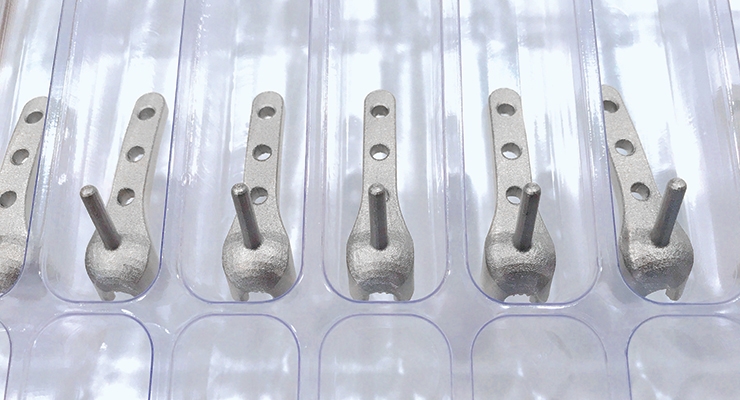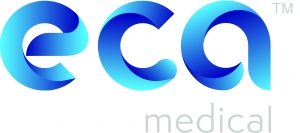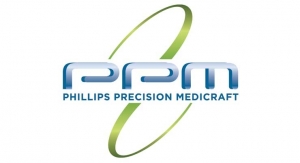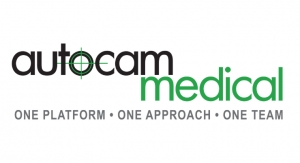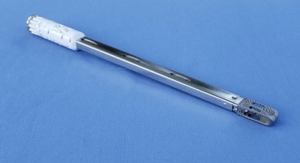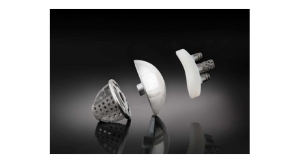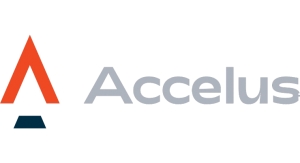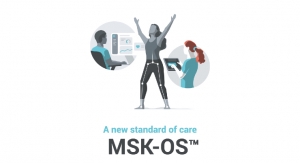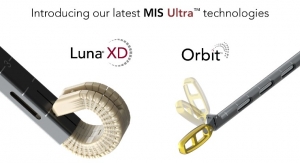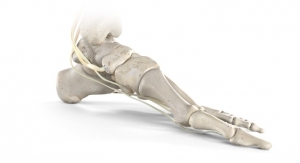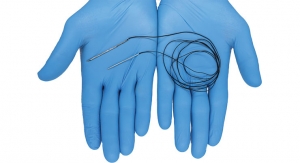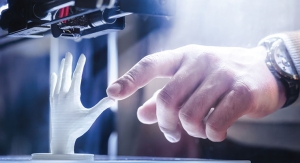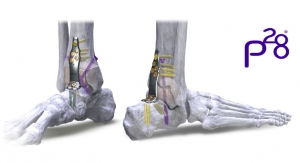Mark Crawford, Contributing Writer11.21.17
Prototyping takes a product from design to manufacturing. It can be as simple as initial proof of concepts for “down and dirty“ prototypes, with few quality or traceability requirements, to complex parts that require verification and validation (V&V). More medical device manufacturers (MDMs) are undertaking prototyping because they realize it is the fastest and lowest-cost way to make the highest quality product. Prototyping is often outsourced to contract manufacturers (CMs); this work often includes short-run R&D prototypes that eventually lead to full production after all the design and testing activities have been completed. An MDM’s quality system requirements regarding process validation often determine how the prototype will be manufactured.
“Prototyping is typically a fast-paced project, with the goal of ironing out any product design issues,” said John Ruggieri, vice president of engineering and business development for Seabrook Medical, a Seabrook, N.H.-based contract manufacturer of precision instruments, implants, and other orthopedic devices. “It is a perfect opportunity to gain manufacturing know-how and is especially useful for surgeon evaluations and mechanical testing.”
Much of that know-how comes through the design for manufacturing (DFM) process. Not only does DFM result in the best possible design for a prototype, it also reduces the number of iterations needed and streamlines the manufacturing process, improving quality and speeding up time to market. This is especially true for complex products and devices.
“When thinking about concepts for prototyping, it is important to take into consideration how it will affect the eventual production cost, manufacturability, and quality of the final design,” said Dave Neal, president and founder of STAT Design LLC, a Morris Plains, N.J.-based orthopedic research and development consulting firm.
To achieve this, many MDMs bring their trusted CMs into the design (and sometimes concept) stage to share their manufacturing and prototyping expertise. CMs especially enjoy being involved early on to help their MDMs build a product that meets manufacturing, supply chain, regulatory, and compliance requirements, with the greatest efficiency and the lowest possible cost.
“In these types of co-development projects, we use our own comprehensive DFM process that helps our engineering and regulatory teams make recommendations and modifications, or introduce new innovations, to the prototype product,” said John Phillips, president of implants and instrumentation for Elmwood Park, N.J.-based Phillips Precision Medicraft, a contract manufacturer of orthopedic implants, instrumentation, and delivery systems. “This ensures repeatable manufacturing at cost-effective price points. Our dedicated on-site prototyping cells allow us to take a new prototype product seamlessly from DFM through validation, testing, and ultimately production, meeting all OEM launch dates and budget requirements.”
Faster Time to Market
Time to market drives the demand for faster iterations of prototypes. “Speed is everything, while maintaining the highest product quality,” said Justin Bishop, prototype manager for Orchid Design, a division of Shelton, Conn.-based Orchid Orthopedic Solutions, an orthopedic contract development, design, and prototyping firm. “Rapid prototyping technology is evolving at a rapid pace, both in additive manufacturing and machining arenas.”
Rapid prototyping is often done with additive manufacturing/3D printing (AM/3DP) methods. High-quality plastic 3D printing machines are available in the $2,000 to $5,000 range. 3D printers allow engineers to iterate many designs, instead of being restricted to selecting just a few for testing function, or visual and tactile feel. Because 3D printing can be fast and inexpensive, more MDMs are prototyping early in the design process, even for designs that may seem “crazy.”
“Many times, additional ideas are sparked by seeing and touching the initial prototype part when it is brought in front of the project team,” said Neal. “Some of these ideas are then used to make a better final design.”
Prototyping also speeds up time to market by helping to determine production methods that streamline the manufacturing process, making it faster with fewer problems.
“For example,” said Lane Hale, president and CEO of ECA Medical Instruments, a Thousand Oaks, Calif.-based designer and manufacturer of single-procedure surgical instruments and surgery-ready procedural kits, “we are working heavily on new manufacturing methods or techniques to help us speed up prototype turnaround, and also leverage the prototyping stage to improve our production process development. There is effective learning going on during this process that we don’t want to lose once we start production.”
DFM, for instance, is very helpful for identifying the most efficient tooling approaches for the prototyping and production stages. This saves money and shortens the lead times for bringing the products to market.
More MDMs are recognizing the value in partnering with their CMs on design for manufacturability to identify any machining constraints and ensure the design can actually be manufactured. “Typically, such collaboration takes place in a pre-production meeting between design engineers and manufacturing engineers to understand design intent, key features, and determine inspection criteria,” said Francois Samson, marketing manager for In’Tech America, a Memphis, Tenn.-based contract manufacturer for the orthopedic industry. “This allows for optimal flow of manufacturing.”
Samson noted that prototyping may save an MDM about 5-10 percent of the total production cost of a product. This varies according to the design changes needed—for example, simplifying features or opening up tolerances to allow for a more streamlined manufacturing process with existing equipment, rather than setting up a new machine. “From a turnaround standpoint, OEMs are certain to save time—days or even weeks—through prototyping and DFM, which significantly reduces the number of surprises and avoidable deviation requests down the road,” he added.
In fact, the design and prototyping teamwork between a MDM and a CM can be so collaborative, with such a high level of contribution from the CM, the two companies actually work out a co-ownership deal on the product. “Highly skilled and creative teams with great problem-solving skills can make critical design changes that significantly improve a product,” said Bishop. “At Orchid Design, some members of our prototype shop team have even been included on patents.”
OEMs Also Want…
MDMs are eager for feasibility or proof-of-concept prototypes to facilitate quick turnarounds prior to investing in prototype development. They want direct access to the CM’s engineering teams and their manufacturing facilities to collaborate on issues in real-time. Production equivalency is a requirement for some companies, especially for early-stage prototypes. “This allows the OEM to utilize the products produced for additional testing and evaluation, which can be used during the latter stage of manufacturing validation of the device,” said Ruggieri. “Time-consuming, special-process validations can often be completed if the correct methods are chosen with the partners that will be involved in the mass production of the products.”
“Time to market is everything,” added Bishop. “The faster you can help a customer get to market, the more valuable you become. There is a need for speed of production-equivalent prototypes for V&V. Once the functional product is made, we provide the DFM feedback that ultimately allows V&V prototypes to be made more quickly. This also alleviates roadblocks during product launch manufacturing.”
OEM needs vary, depending on product type and turnaround time. Simple prototypes can be turned around within 24 hours; more complex devices and instruments can takes days or months.
“The one common denominator is the need to manufacture to spec rapidly,” said Phillips. Depending on the project, this may require investing in new equipment to meet OEM expectations. For example, Phillips Precision Medicraft recently purchased a Hurco precision machining center that is equipped with robust conversational programming controls. “These features drastically reduce time-to-machine by utilizing skilled floor technicians supporting our kazien process efforts, which essentially broadens our engineering support team,” added Phillips.
Going through DFM with an experienced CM typically leads to simplified designs, faster machine cycles, and reduced manufacturing costs. A good place to start a DFM review is with prints and quality inspection (QI) sheets in hand.
“Prints will typically capture critical dimensions, which must be met to avoid compromising the device’s critical functions, while QI sheets retrace inspection methods that customer will use,” said Samson. “Tolerances on critical dimensions may have been set arbitrarily, or the inspection method and criteria may be too stringent. Therefore it is important to at least have a discussion to ensure a design can actually be manufactured and is not over-engineered.”
The efficiency and speed of DFM can be further enhanced by working with a local prototype supplier. “Many times the machinist and manufacturing engineer have ideas on how to make the prototype work as intended, and not necessarily exactly to the print,” said Neal. “The OEM engineer can be there with the machinist and make changes on the fly as the part is being made, recording the updates to the prints.”
Technology Advances
Continual improvements in AM/3D technologies are convincing engineers and designers to rethink the way they design and manufacture products. AM is pushing the limits of what MDMs used to think was “impossible” to make. The technology, materials, and equipment options are rapidly growing, as demonstrated by the steady stream of announcements that show how the limits are constantly being pushed. For example, today’s 3D printers are capable of depositing material in layers as thin as 0.1 mm (0.004 inch), making complex details possible.
“I’m not sure there is anything AM can’t produce,” said Phillips. “I believe the question is why and when to use the technology, instead of proven subtractive methods. AM machines can even be preset to run a number of products that may repeat on a monthly or weekly basis. The idea is to have all these different products set up on precision pallets so, when called upon to manufacture, there is little or no set-up time increasing the run rate of the machine tool.”
More OEMs are requiring the certifications they need for V&V submission. For production equivalency parts, the process must be demonstrated to be repeatable, reproducible, and scalable. Sometimes it is required that a prototype must conform to a process that already has some FDA requirements—for example, process validation runs that yield somewhat experimental parts to finalize a design that will soon go into production. “Once complete, the production parts must be run on ‘like’ equipment and, in some cases, the identical equipment the prototype was manufactured with, depending on the clients’ quality requirements,” said Phillips.
The FDA and international regulatory bodies have become increasingly stringent as devices become smaller and more complex. Therefore, verification and validation of the last round of production-equivalency prototypes is especially critical as OEMs get ready to launch a new system. The OEM must be able to verify and document accuracy and repeatability of manufacturing at this stage. The goal is to produce a prototype that is virtually identical to the production item, which will be manufactured at higher volume. “Customers may even require first article inspection on these production-equivalent parts,” said Samson.
Advancements in metrology and vision systems also have a big impact on V&V, especially for products with tight tolerances. Improvements in probing and coordinate measuring machine technologies, such as probes on computer numerical control (CNC) equipment, increase throughput by being able to verify dimensions while the part is still in the machine; advanced programming software makes programming easier and more robust for tighter dimensional tolerances, as well as comparators that use digital CAD files for overlays. “This allows us to inspect prototypes quickly and check a minor change on the fly, without the delays of getting a mylar overlay created or recreated after a minor change,” said Bishop. “The vision system on our FOBA laser marker proves incredibly useful in the prototype world. We are able to use a CAD file to overlay the laser marking over the part, allowing for incredibly fast and accurate laser marking, without the need to create fixtures or extra setup pieces.”
Depending on the project, 3D printing can be used to make tooling as well, which can save weeks of time and thousands of dollars in engineering costs. For example, Orchid Design has the ability to 3D print wax molds for rapid casting, which greatly increases speed. This negates the lengthy lead time needed for traditional casting tooling—not just for the initial tooling, but also any lead time required for changes to the tooling.
Standard machining [CNC and conventional milling, turning, wire electrical discharge machining (EDM), heat treat, passivation, conventional and laser welding, marking, and inspection] still has a strong place in the prototyping world. “Although AM is repeatable and improving on resolution, conventional CNC machining definitely has the edge in terms of accuracy,” said Samson. “That, combined with wire or RAM EDM, allows us to deliver increasingly complex instruments or implants.”
The role of machining technologies is constantly being challenged by advancing AM/3DP, so machine manufacturers must develop better technologies and capabilities to stay competitive. For example, “hybrid” machines combine multiple technologies in one station. Five-axis milling machines now have the ability to be vertical lathes, allowing for faster production and higher accuracy due to fewer setups in multiple machines. Screw machines are now available with lasers and milling machines with additive capabilities. In the past, machined components that required both conventional machining and laser cutting were done as separate operations on a machining center and a laser cutter. Now, hybrid LaserSwiss machines can do both steps and produce quick prototypes for proof-of-concept testing and evaluation.
“The cutting tool companies are also developing cutting tools for speed, accuracy, and finish capabilities with the more exotic materials used in orthopedic manufacturing,” said Bishop.
Even on standard materials like stainless steels, the tighter tolerances being applied to today’s devices place higher demands on manufacturing technologies. “The tighter tolerances require special attention to processes such as heat treatments, electro-polishing, passivation, and welding,” said Ruggieri. “All these processes may have some effect on part geometry and must be carefully chosen, sequenced, and controlled from the beginning.”
ECA Medical Instruments utilizes metal precision machining and injection molding of plastics for its single-use instruments. “In addition to using additive manufacturing, we’re working on inexpensive methods to speed up mold development for prototypes to get product and process feedback,” said Hale. “We are focused on shortening the entire concept to launch process, not just looking at the prototype phase in isolation.”
With production equivalency, specialty prototyping equipment is becoming less useful, noted Ruggieri. “We are being asked to manufacture small lot sizes, often just one or two pieces, using mass production machinery,” he said. “High-volume Swiss machines, typically used for lot sizes of hundreds or even thousands of parts, are programmed and set up to run sample lots of 10 pieces or fewer. The same can be seen with robotically fed milling machines with multiple conveyors and pallets usually reserved for the larger future lot sizes. These assets are now utilized at the prototype stage for individual pieces, when production equivalency is a must.”
Prototyping in the Future
Prototyping continues to advance on multiple fronts. For example, it has been difficult to get metal coatings to adhere to various plastics, including the high-demand polyetheretherketone (PEEK). Today, however, suppliers such as Ionbond use chemical vapor deposition and physical vapor deposition to apply metal to plastics with superior adhesion (especially titanium to PEEK). For testing, materials such as General Plastics’ Last-A-Foam offer different densities that correlate well with various types of bone (cortical/cancellous). This foam material is an ideal choice for evaluating the effectiveness of the implants or surgical tools being prototyped.
Programming tends to be one of the more lengthy parts of the prototyping process. Advancements in CAD and CAM software are reducing the time it takes to prototype. For example, the 3D printing of plastic prototypes with porous structures relies on porous structure software that comes with proprietary file formats for the printers being used. nTopology Element allows the porous structure files to be saved as an STL file for direct printing to a plastic 3D printer. This is especially helpful when developing implant designs that require a trabecular structure.
More detailed modeling tools are being used with DFM and prototyping. For example, finite element analysis (FEA) modeling during the feasibility stage is an effective way to virtually test the limits of the design specifications. FEA is essential for identifying stress points under internal and external loads and can determine if a design is robust enough to go ahead and start manufacturing the tooling. FEA also gives engineers the ability to shorten quoting and prototype lead times, which in turn reduces the amount of hard tooling iterations and decreases the time from purchase order to production.
The fantastic potential that AM/3DP provides opens up design possibilities to the point where engineers feel like whatever they design can be brought to life. The “making the impossible possible” idea poses a big challenge to prototyping companies—because of speed and cost expectations, they simply don’t have the time and money to develop a unique process for every “impossible” prototyping project that comes along. Instead, their incredibly creative and talented engineering and design teams use existing technologies in innovative ways to produce these challenging prototypes.
For example, ProtoCAM, an Allentown, Pa.-based provider of value-added additive manufacturing and rapid prototyping services, has developed a rapid-prototyping approach for knee implants that utilizes a wax prototype. Instead of relying on the popular AM method of selective laser sintering, ProtoCAM created the knee replacement prototype with casting, using a stereolithography pattern and foundry’s wax. The result is an extremely detailed and accurate prototype with a production-level surface finish that was later used in the investment casting process. Overall, this process cost less than SLS and reduced time to market by months.
What impresses Bishop the most is the incredible rate of growth in the additive manufacturing space. Not only is the MDM industry using AM to make prototypes faster, or print fixtures and blanks to be machined, it is steadily marching toward making production-ready parts, as well as developing better methods for secondary, tight-tolerance machining on already-printed parts.
“Everyday it feels like there is a faster, more accurate, higher-resolution 3D printer on the market, and more advanced materials to go with it,” said Bishop. “It is truly an exciting time in the manufacturing world and very rewarding to be a part of an industry that is truly pushing the limits.”
Mark Crawford is a full-time freelance business and marketing/communications writer based in Madison, Wis. His clients range from startups to global manufacturing leaders. He also writes a variety of feature articles for regional and national publications and is the author of five books.
“Prototyping is typically a fast-paced project, with the goal of ironing out any product design issues,” said John Ruggieri, vice president of engineering and business development for Seabrook Medical, a Seabrook, N.H.-based contract manufacturer of precision instruments, implants, and other orthopedic devices. “It is a perfect opportunity to gain manufacturing know-how and is especially useful for surgeon evaluations and mechanical testing.”
Much of that know-how comes through the design for manufacturing (DFM) process. Not only does DFM result in the best possible design for a prototype, it also reduces the number of iterations needed and streamlines the manufacturing process, improving quality and speeding up time to market. This is especially true for complex products and devices.
“When thinking about concepts for prototyping, it is important to take into consideration how it will affect the eventual production cost, manufacturability, and quality of the final design,” said Dave Neal, president and founder of STAT Design LLC, a Morris Plains, N.J.-based orthopedic research and development consulting firm.
To achieve this, many MDMs bring their trusted CMs into the design (and sometimes concept) stage to share their manufacturing and prototyping expertise. CMs especially enjoy being involved early on to help their MDMs build a product that meets manufacturing, supply chain, regulatory, and compliance requirements, with the greatest efficiency and the lowest possible cost.
“In these types of co-development projects, we use our own comprehensive DFM process that helps our engineering and regulatory teams make recommendations and modifications, or introduce new innovations, to the prototype product,” said John Phillips, president of implants and instrumentation for Elmwood Park, N.J.-based Phillips Precision Medicraft, a contract manufacturer of orthopedic implants, instrumentation, and delivery systems. “This ensures repeatable manufacturing at cost-effective price points. Our dedicated on-site prototyping cells allow us to take a new prototype product seamlessly from DFM through validation, testing, and ultimately production, meeting all OEM launch dates and budget requirements.”
Faster Time to Market
Time to market drives the demand for faster iterations of prototypes. “Speed is everything, while maintaining the highest product quality,” said Justin Bishop, prototype manager for Orchid Design, a division of Shelton, Conn.-based Orchid Orthopedic Solutions, an orthopedic contract development, design, and prototyping firm. “Rapid prototyping technology is evolving at a rapid pace, both in additive manufacturing and machining arenas.”
Rapid prototyping is often done with additive manufacturing/3D printing (AM/3DP) methods. High-quality plastic 3D printing machines are available in the $2,000 to $5,000 range. 3D printers allow engineers to iterate many designs, instead of being restricted to selecting just a few for testing function, or visual and tactile feel. Because 3D printing can be fast and inexpensive, more MDMs are prototyping early in the design process, even for designs that may seem “crazy.”
“Many times, additional ideas are sparked by seeing and touching the initial prototype part when it is brought in front of the project team,” said Neal. “Some of these ideas are then used to make a better final design.”
Prototyping also speeds up time to market by helping to determine production methods that streamline the manufacturing process, making it faster with fewer problems.
“For example,” said Lane Hale, president and CEO of ECA Medical Instruments, a Thousand Oaks, Calif.-based designer and manufacturer of single-procedure surgical instruments and surgery-ready procedural kits, “we are working heavily on new manufacturing methods or techniques to help us speed up prototype turnaround, and also leverage the prototyping stage to improve our production process development. There is effective learning going on during this process that we don’t want to lose once we start production.”
DFM, for instance, is very helpful for identifying the most efficient tooling approaches for the prototyping and production stages. This saves money and shortens the lead times for bringing the products to market.
More MDMs are recognizing the value in partnering with their CMs on design for manufacturability to identify any machining constraints and ensure the design can actually be manufactured. “Typically, such collaboration takes place in a pre-production meeting between design engineers and manufacturing engineers to understand design intent, key features, and determine inspection criteria,” said Francois Samson, marketing manager for In’Tech America, a Memphis, Tenn.-based contract manufacturer for the orthopedic industry. “This allows for optimal flow of manufacturing.”
Samson noted that prototyping may save an MDM about 5-10 percent of the total production cost of a product. This varies according to the design changes needed—for example, simplifying features or opening up tolerances to allow for a more streamlined manufacturing process with existing equipment, rather than setting up a new machine. “From a turnaround standpoint, OEMs are certain to save time—days or even weeks—through prototyping and DFM, which significantly reduces the number of surprises and avoidable deviation requests down the road,” he added.
In fact, the design and prototyping teamwork between a MDM and a CM can be so collaborative, with such a high level of contribution from the CM, the two companies actually work out a co-ownership deal on the product. “Highly skilled and creative teams with great problem-solving skills can make critical design changes that significantly improve a product,” said Bishop. “At Orchid Design, some members of our prototype shop team have even been included on patents.”
OEMs Also Want…
MDMs are eager for feasibility or proof-of-concept prototypes to facilitate quick turnarounds prior to investing in prototype development. They want direct access to the CM’s engineering teams and their manufacturing facilities to collaborate on issues in real-time. Production equivalency is a requirement for some companies, especially for early-stage prototypes. “This allows the OEM to utilize the products produced for additional testing and evaluation, which can be used during the latter stage of manufacturing validation of the device,” said Ruggieri. “Time-consuming, special-process validations can often be completed if the correct methods are chosen with the partners that will be involved in the mass production of the products.”
“Time to market is everything,” added Bishop. “The faster you can help a customer get to market, the more valuable you become. There is a need for speed of production-equivalent prototypes for V&V. Once the functional product is made, we provide the DFM feedback that ultimately allows V&V prototypes to be made more quickly. This also alleviates roadblocks during product launch manufacturing.”
OEM needs vary, depending on product type and turnaround time. Simple prototypes can be turned around within 24 hours; more complex devices and instruments can takes days or months.
“The one common denominator is the need to manufacture to spec rapidly,” said Phillips. Depending on the project, this may require investing in new equipment to meet OEM expectations. For example, Phillips Precision Medicraft recently purchased a Hurco precision machining center that is equipped with robust conversational programming controls. “These features drastically reduce time-to-machine by utilizing skilled floor technicians supporting our kazien process efforts, which essentially broadens our engineering support team,” added Phillips.
Going through DFM with an experienced CM typically leads to simplified designs, faster machine cycles, and reduced manufacturing costs. A good place to start a DFM review is with prints and quality inspection (QI) sheets in hand.
“Prints will typically capture critical dimensions, which must be met to avoid compromising the device’s critical functions, while QI sheets retrace inspection methods that customer will use,” said Samson. “Tolerances on critical dimensions may have been set arbitrarily, or the inspection method and criteria may be too stringent. Therefore it is important to at least have a discussion to ensure a design can actually be manufactured and is not over-engineered.”
The efficiency and speed of DFM can be further enhanced by working with a local prototype supplier. “Many times the machinist and manufacturing engineer have ideas on how to make the prototype work as intended, and not necessarily exactly to the print,” said Neal. “The OEM engineer can be there with the machinist and make changes on the fly as the part is being made, recording the updates to the prints.”
Technology Advances
Continual improvements in AM/3D technologies are convincing engineers and designers to rethink the way they design and manufacture products. AM is pushing the limits of what MDMs used to think was “impossible” to make. The technology, materials, and equipment options are rapidly growing, as demonstrated by the steady stream of announcements that show how the limits are constantly being pushed. For example, today’s 3D printers are capable of depositing material in layers as thin as 0.1 mm (0.004 inch), making complex details possible.
“I’m not sure there is anything AM can’t produce,” said Phillips. “I believe the question is why and when to use the technology, instead of proven subtractive methods. AM machines can even be preset to run a number of products that may repeat on a monthly or weekly basis. The idea is to have all these different products set up on precision pallets so, when called upon to manufacture, there is little or no set-up time increasing the run rate of the machine tool.”
More OEMs are requiring the certifications they need for V&V submission. For production equivalency parts, the process must be demonstrated to be repeatable, reproducible, and scalable. Sometimes it is required that a prototype must conform to a process that already has some FDA requirements—for example, process validation runs that yield somewhat experimental parts to finalize a design that will soon go into production. “Once complete, the production parts must be run on ‘like’ equipment and, in some cases, the identical equipment the prototype was manufactured with, depending on the clients’ quality requirements,” said Phillips.
The FDA and international regulatory bodies have become increasingly stringent as devices become smaller and more complex. Therefore, verification and validation of the last round of production-equivalency prototypes is especially critical as OEMs get ready to launch a new system. The OEM must be able to verify and document accuracy and repeatability of manufacturing at this stage. The goal is to produce a prototype that is virtually identical to the production item, which will be manufactured at higher volume. “Customers may even require first article inspection on these production-equivalent parts,” said Samson.
Advancements in metrology and vision systems also have a big impact on V&V, especially for products with tight tolerances. Improvements in probing and coordinate measuring machine technologies, such as probes on computer numerical control (CNC) equipment, increase throughput by being able to verify dimensions while the part is still in the machine; advanced programming software makes programming easier and more robust for tighter dimensional tolerances, as well as comparators that use digital CAD files for overlays. “This allows us to inspect prototypes quickly and check a minor change on the fly, without the delays of getting a mylar overlay created or recreated after a minor change,” said Bishop. “The vision system on our FOBA laser marker proves incredibly useful in the prototype world. We are able to use a CAD file to overlay the laser marking over the part, allowing for incredibly fast and accurate laser marking, without the need to create fixtures or extra setup pieces.”
Depending on the project, 3D printing can be used to make tooling as well, which can save weeks of time and thousands of dollars in engineering costs. For example, Orchid Design has the ability to 3D print wax molds for rapid casting, which greatly increases speed. This negates the lengthy lead time needed for traditional casting tooling—not just for the initial tooling, but also any lead time required for changes to the tooling.
Standard machining [CNC and conventional milling, turning, wire electrical discharge machining (EDM), heat treat, passivation, conventional and laser welding, marking, and inspection] still has a strong place in the prototyping world. “Although AM is repeatable and improving on resolution, conventional CNC machining definitely has the edge in terms of accuracy,” said Samson. “That, combined with wire or RAM EDM, allows us to deliver increasingly complex instruments or implants.”
The role of machining technologies is constantly being challenged by advancing AM/3DP, so machine manufacturers must develop better technologies and capabilities to stay competitive. For example, “hybrid” machines combine multiple technologies in one station. Five-axis milling machines now have the ability to be vertical lathes, allowing for faster production and higher accuracy due to fewer setups in multiple machines. Screw machines are now available with lasers and milling machines with additive capabilities. In the past, machined components that required both conventional machining and laser cutting were done as separate operations on a machining center and a laser cutter. Now, hybrid LaserSwiss machines can do both steps and produce quick prototypes for proof-of-concept testing and evaluation.
“The cutting tool companies are also developing cutting tools for speed, accuracy, and finish capabilities with the more exotic materials used in orthopedic manufacturing,” said Bishop.
Even on standard materials like stainless steels, the tighter tolerances being applied to today’s devices place higher demands on manufacturing technologies. “The tighter tolerances require special attention to processes such as heat treatments, electro-polishing, passivation, and welding,” said Ruggieri. “All these processes may have some effect on part geometry and must be carefully chosen, sequenced, and controlled from the beginning.”
ECA Medical Instruments utilizes metal precision machining and injection molding of plastics for its single-use instruments. “In addition to using additive manufacturing, we’re working on inexpensive methods to speed up mold development for prototypes to get product and process feedback,” said Hale. “We are focused on shortening the entire concept to launch process, not just looking at the prototype phase in isolation.”
With production equivalency, specialty prototyping equipment is becoming less useful, noted Ruggieri. “We are being asked to manufacture small lot sizes, often just one or two pieces, using mass production machinery,” he said. “High-volume Swiss machines, typically used for lot sizes of hundreds or even thousands of parts, are programmed and set up to run sample lots of 10 pieces or fewer. The same can be seen with robotically fed milling machines with multiple conveyors and pallets usually reserved for the larger future lot sizes. These assets are now utilized at the prototype stage for individual pieces, when production equivalency is a must.”
Prototyping in the Future
Prototyping continues to advance on multiple fronts. For example, it has been difficult to get metal coatings to adhere to various plastics, including the high-demand polyetheretherketone (PEEK). Today, however, suppliers such as Ionbond use chemical vapor deposition and physical vapor deposition to apply metal to plastics with superior adhesion (especially titanium to PEEK). For testing, materials such as General Plastics’ Last-A-Foam offer different densities that correlate well with various types of bone (cortical/cancellous). This foam material is an ideal choice for evaluating the effectiveness of the implants or surgical tools being prototyped.
Programming tends to be one of the more lengthy parts of the prototyping process. Advancements in CAD and CAM software are reducing the time it takes to prototype. For example, the 3D printing of plastic prototypes with porous structures relies on porous structure software that comes with proprietary file formats for the printers being used. nTopology Element allows the porous structure files to be saved as an STL file for direct printing to a plastic 3D printer. This is especially helpful when developing implant designs that require a trabecular structure.
More detailed modeling tools are being used with DFM and prototyping. For example, finite element analysis (FEA) modeling during the feasibility stage is an effective way to virtually test the limits of the design specifications. FEA is essential for identifying stress points under internal and external loads and can determine if a design is robust enough to go ahead and start manufacturing the tooling. FEA also gives engineers the ability to shorten quoting and prototype lead times, which in turn reduces the amount of hard tooling iterations and decreases the time from purchase order to production.
The fantastic potential that AM/3DP provides opens up design possibilities to the point where engineers feel like whatever they design can be brought to life. The “making the impossible possible” idea poses a big challenge to prototyping companies—because of speed and cost expectations, they simply don’t have the time and money to develop a unique process for every “impossible” prototyping project that comes along. Instead, their incredibly creative and talented engineering and design teams use existing technologies in innovative ways to produce these challenging prototypes.
For example, ProtoCAM, an Allentown, Pa.-based provider of value-added additive manufacturing and rapid prototyping services, has developed a rapid-prototyping approach for knee implants that utilizes a wax prototype. Instead of relying on the popular AM method of selective laser sintering, ProtoCAM created the knee replacement prototype with casting, using a stereolithography pattern and foundry’s wax. The result is an extremely detailed and accurate prototype with a production-level surface finish that was later used in the investment casting process. Overall, this process cost less than SLS and reduced time to market by months.
What impresses Bishop the most is the incredible rate of growth in the additive manufacturing space. Not only is the MDM industry using AM to make prototypes faster, or print fixtures and blanks to be machined, it is steadily marching toward making production-ready parts, as well as developing better methods for secondary, tight-tolerance machining on already-printed parts.
“Everyday it feels like there is a faster, more accurate, higher-resolution 3D printer on the market, and more advanced materials to go with it,” said Bishop. “It is truly an exciting time in the manufacturing world and very rewarding to be a part of an industry that is truly pushing the limits.”
Mark Crawford is a full-time freelance business and marketing/communications writer based in Madison, Wis. His clients range from startups to global manufacturing leaders. He also writes a variety of feature articles for regional and national publications and is the author of five books.

